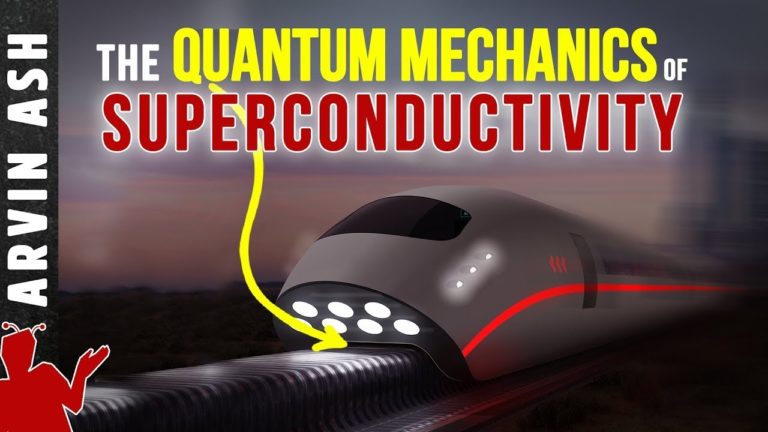How does Superconductivity work at the Quantum level?
In 1908, Dutch physicist Heike Onnes figured out how to turn helium gas to liquified helium for the first time. He cooled Mercury and found that all its electrical resistance went away. Electricity in a superconducting wire will continue to flow virtually forever with no added energy. Superconductors also expel magnetic fields. So if you put a magnet over a superconductor, the magnet will levitate. How is this possible? Quantum mechanics can explain.
In 1933 by Walther Meissner and Robert Ochsenfeld found that when a metal is cooled while in a small magnetic field, the flux is spontaneously excluded as the metal becomes superconducting. This is known now as the Meissner effect. Superconducting material expel magnetic flux fields. Since magnetic fields cannot pass through it, a magnet over a superconductor magnet lifts up in order for the flux to flow to the opposite pole. This is what causes levitation.
In 1957 John Bardeen, Leon Cooper and John Robert Schrieffer proposed what is now called the BCS theory. We need to first understand what causes resistance in the first place. Inside of a metal, the outermost electrons in the valence shell, being furthest away from the nucleus are so free to move around that a sample of metal can be treated as a bunch of atoms surrounded by a sea of electrons.
But as electrons travel through the material, the atoms, which now have slightly positive charges because they have given up an electron in their outer shell are in the way so they collide with atoms that may be vibrating. This causes the electron to scatter and it ends up giving up some of its energy to the atom, causing it to vibrate a little more. This added vibration causes the whole lattice to vibrate a bit more. This higher vibration results in heating up of the metal and is how energy is lost due to resistance.
To understand how resistance goes away, I have to tell you about Fermions and Bosons. A particle with a half integer spin is called a Fermion, named after Italian scientist Enrico Fermi. A particle that has an integer spin is called a Boson, named after Indian scientist Satyendra Bose.
An electron can have a spin of +1/2 or -1/2, so it is a fermion. A Photon can have a spin of +1 or -1, so it is a boson. It turns out that while any number of identical bosons can occupy the lowest energy level in a quantum system, two or more identical fermions cannot occupy the same energy level in a quantum system. This is called the Pauli Exclusion principle. This is why you can only have 2 electrons in any given orbital of an atom.
However, bosons have this restriction, and can pack together in one low energy state, when a bunch of them around, especially at low temperatures.
As an electron moves through a conductor, it attracts the positive ions that make up the rigid lattice of the metal. This attraction distorts the ion lattice, moving the ions slightly toward the electron, increasing the positive charge density of the lattice in the vicinity. This positive charge density attracts other electrons. At long distances, this attraction between electrons due to the displaced ions can overcome the electrons’ repulsion and cause them to join. These two electrons form a combination called a Cooper pair.
When two electrons come together in this way, their half spins interact in such a way that together they form an integer spin. They start behaving like bosons instead of fermions. They are no longer subject to the Pauli exclusion principle, so now they occupy the lowest energy level possible.
The collection of Cooper pairs starts acting like one entity or unit – this is called a Bose-Einstein condensate. So all Cooper pairs together act like one giant electron. There is no resistance because the condensate cannot go to any lower energy state, so no interaction with atoms in the lattice occurs, hence zero resistance.
The interaction of the electrons in a Cooper pairing is very weak, so it typically only happens at very low temperatures. As the temperature gets above the critical temperature, the Cooper pairs get disrupted because there is enough energy to break them up. So superconductivity is lost. It’s the formation of Cooper pairs through their interaction with the phonons of the material that are the cause of superconductivity.
Do not forget to share your opinion with us to provide you with the best posts !




0 Comments